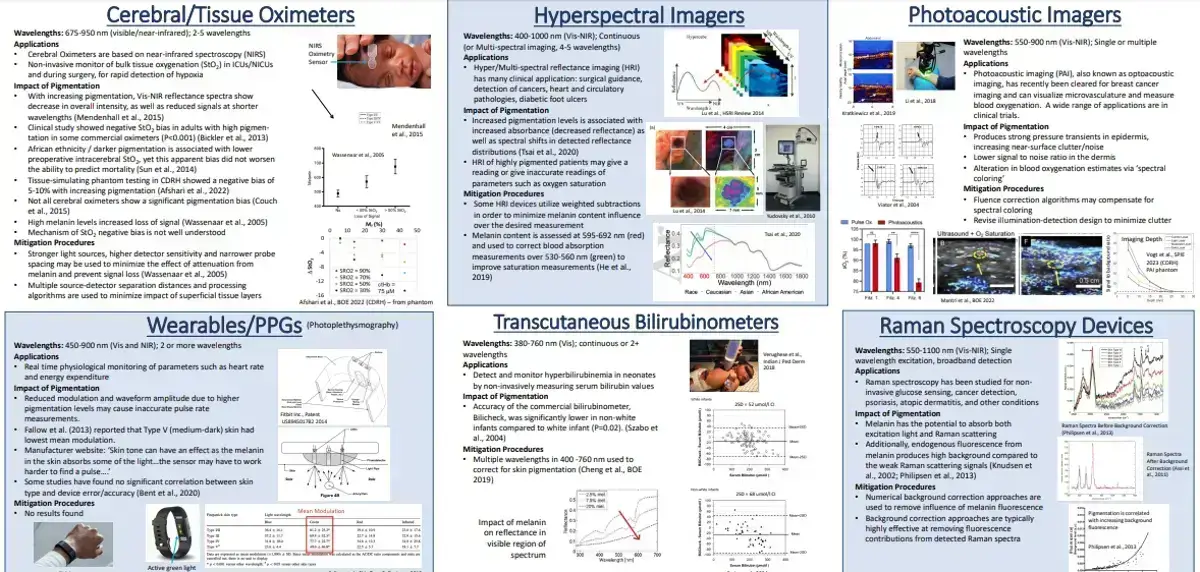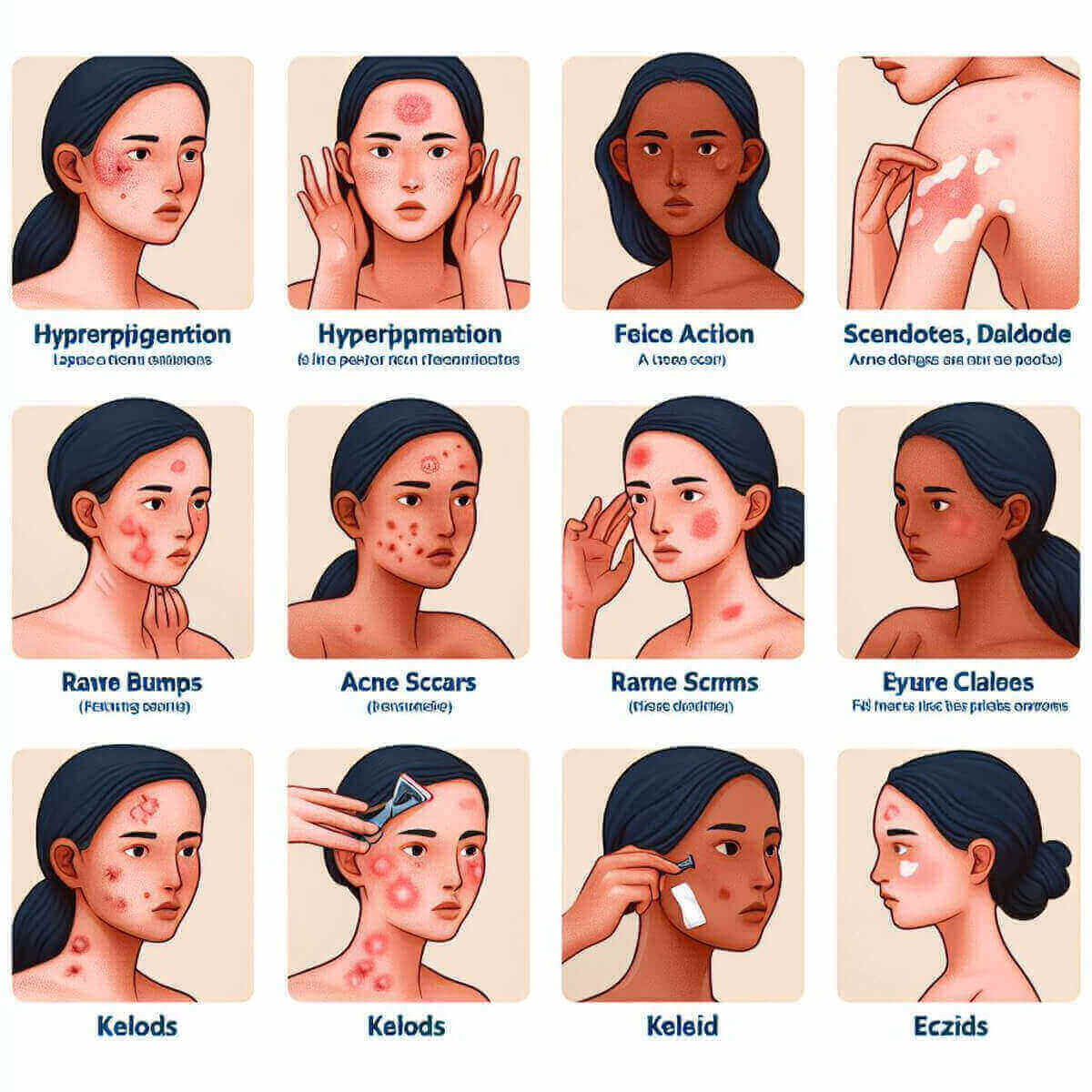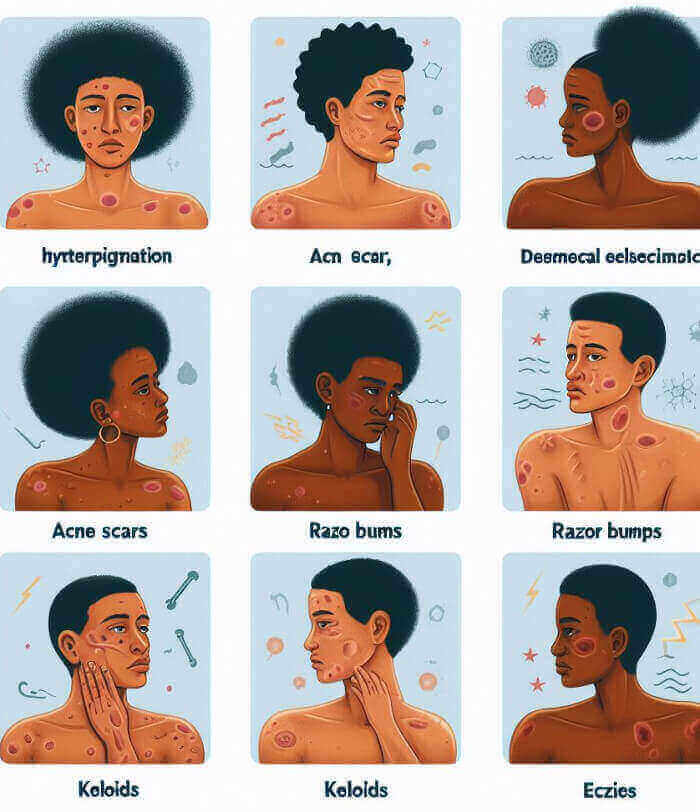Hydroquinone is often used to lighten and reduce dark spots and hyperpigmentation, including melasma. Many bleaching creams contain hydroquinone.
However, in people with darker skin, results vary substantially. Overuse can even cause permanent skin damage and changes.

Hydroquinone use on Dark Skin
Hydroquinone is commonly used in skincare products for individuals with dark skin due to its skin-lightening properties. However, in many countries, it can only be purchased via a prescription and may need to be compounded by a pharmacist. In developing nations, it is usually available over-the-counter (OTC).
Hydroquinone is typically used in cream or lotion formulations at concentration levels of between 1% to 5%. Most creams contain combination formulations that also include other skin lightening agents such as topical retinoids (to increase efficacy) and low potency topical steroids (to reduce irritation and inflammation).
Mechanism of Action
Hydroquinone lightens epidermal (but not the deeper dermal) skin pigmentation by reducing the production of new melanin. In temporarily inhibits the tyrosinase enzyme that causes the skin pigement melanin; and it selectively damages melanocytes and melanosomes.
Most people begin treatment by using hydroquinone topically on the hyperpigmented skin area twice daily for three months. After that period, most patients can reduce application frequency to twice per week to maintain their improved pigmentation.
Below are some specific uses of hydroquinone in treating skin concerns in individuals with dark skin.
Treatment of Hyperpigmentation
Dark skin is more prone to hyperpigmentation, which includes conditions such as post-inflammatory hyperpigmentation (PIH), melasma and age spots. Hydroquinone inhibits the activity of tyrosinase, an enzyme involved in melanin production. By reducing melanin synthesis, hydroquinone helps lighten dark patches and even out skin tone. You can find many testimonials on Reddit for such use in people of color. Treating hyperpigmentation in Indian skin is especially common.
Melasma Management
Melasma is a common skin condition characterized by dark, irregular patches on the face, particularly in areas exposed to the sun. Hydroquinone is often included in skincare formulations designed to address melasma, either alone or in combination with other active ingredients like tretinoin and corticosteroids.
Treatment of Dark Spots and Scars
Hydroquinone is effective in fading dark spots left behind by acne or other skin injuries. It works by disrupting the excessive melanin production in the affected areas, leading to a more uniform skin tone.
Correction of Uneven Skin Tone
Individuals with dark skin may experience uneven skin tone due to various factors, including sun exposure, inflammation, and hormonal changes. Hydroquinone helps in balancing skin pigmentation, promoting a more consistent complexion.
Topical Treatment for Dermatosis Papulosa Nigra (DPN)
Dermatosis Papulosa Nigra is a common skin condition that presents as small, dark bumps on the face, especially in individuals with darker skin tones (e.g., actor Morgan Freeman). Hydroquinone can be incorporated into topical treatments to reduce the appearance of these lesions.
Hydroquinone Side Effects
It is essential to note that while hydroquinone is widely used for these purposes, there have been concerns about potential side effects, especially with prolonged and high-dose use.
The most worrying side effect is ochronosis, a bluish-black or bluish-grey discoloration of the skin. However, it has been reported in rare cases. It is more commonly seen in patients that use a high concentration of hydroquinone for a long period on large areas of the body.
Due to these concerns, regulatory authorities in certain regions have imposed restrictions on the concentration of hydroquinone in over-the-counter skincare products.
Amond the potential adverse effects include:
- Irritation.
- Allergic contact dermatitis.
- Erythema.
- Inflammation.
- Xeroderma.
- Stinging.
- ochronosis
Before using hydroquinone or any other skincare product, individuals with dark skin should consult with a dermatologist to determine the most appropriate treatment plan and to ensure the safe and effective use of these products. Additionally, it’s crucial to use sun protection measures, such as sunscreen, as part of the skincare routine to prevent further hyperpigmentation and maintain overall skin health.


